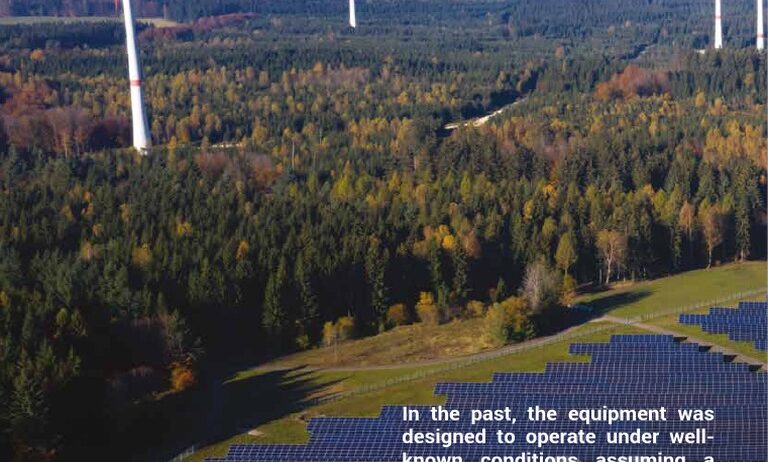The conservation of energy is a fundamental principle in thermodynamics that asserts energy cannot be created or destroyed, only transformed from one form to another. In electrical systems, this principle is quintessential, particularly in power grids where transformers play a pivotal role. Their operation is not just a mechanism for voltage transformation; it is a sophisticated process that interacts intricately with the conservation of energy. Understanding how transformers achieve this can shed light on their significance in modern electrical grids and their role in promoting sustainability.
Transformers can be categorized into two broad types: step-up transformers and step-down transformers. Step-up transformers increase voltage levels, while step-down transformers decrease them. Both types employ electromagnetic induction, a phenomenon discovered by Michael Faraday in the 19th century. The essential components of a transformer include primary and secondary coils (windings), a core made typically of iron, and insulation materials. The primary winding is connected to the power source, while the secondary winding supplies the transformed voltage to the load.
The process starts when an alternating current (AC) flows through the primary winding. This current generates a magnetic field around the wire. The iron core, due to its magnetic properties, amplifies this magnetic field. The alternating current, characterized by its periodic reversal of direction, creates a fluctuating magnetic field. This oscillation is crucial for inducing voltage in the secondary winding through electromagnetic induction.
As the magnetic flux passes through the secondary winding, it induces a current proportional to the number of turns in each winding. The relationship between the voltage across the primary and secondary windings is expressed by the turns ratio, defined as:
Vp/Vs = Np/Ns
Here, Vp and Vs are the primary and secondary voltages, while Np and Ns are the number of turns in the primary and secondary coils, respectively. This formula illustrates how voltage is conservatively maintained; when a transformer steps up voltage, a reduction in current occurs, and vice versa. This precision ensures that energy is conserved throughout the transformation process.
Energy conservation in transformers is reflected mathematically as:
Pp = Ps
Where Pp and Ps represent the power at the primary and secondary sides of the transformer. Given that power (P) is defined as the product of voltage (V) and current (I), this relationship confirms that the increase in voltage corresponds with a decrease in current, thereby safeguarding the total energy transmitted across the system. However, this ideal scenario assumes that the transformer operates without losses.
In reality, transformers exhibit certain inefficiencies, predominantly due to two factors: copper losses and iron losses. Copper losses arise from the resistance in the windings, converting some electrical energy into heat. Iron losses occur in the core and can be classified into hysteresis losses, caused by the magnetic properties of the core material, and eddy current losses, attributed to induced currents within the core itself. These losses must be minimized to enhance transformer efficiency, which is typically above 95% for well-designed units even under varying load conditions.
To maintain the conservation of energy efficiently, modern transformers utilize advanced materials and technologies. For instance, amorphous steel cores significantly reduce iron losses by minimizing hysteresis losses. Additionally, intelligent monitoring and management systems allow for optimal load balancing across the grid, which in turn reduces stress on transformers, thereby curtailing losses.
Beyond the technical efficiencies, transformers also play an integral role in managing the complexity of power distribution networks. They facilitate the integration of renewable energy sources—such as wind and solar—into traditional power grids. As clean energy production sites are often situated far from the consumption centers, transformers ensure that energy can be transmitted over long distances with minimal loss. Employing step-up transformers at generation points allows for the elevation of voltage levels, which decreases current and reduces heat losses during transmission. Conversely, step-down transformers at substations make energy safe and usable for residential and commercial applications.
The adaptability of transformers also extends to their usage in various electrical installations, from small-scale residential systems to extensive industrial applications. In a distributed generation framework, where energy is produced closer to consumption points, transformers enable seamless energy flow management and load distribution. They ensure that energy quality remains consistent, preventing harmonics and voltage fluctuations that could impact sensitive machinery or electronic devices.
As society continues to transition toward greener energy solutions, the importance of transformers in energy conservation cannot be overstated. Their efficient operation supports the sustainable and reliable delivery of electricity, thereby contributing to the overall goal of reducing greenhouse gas emissions associated with energy production. The careful management of electrical energy in transit through transformers reverberates with broader implications for climate change mitigation, illustrating how an understanding of these devices is essential for future energy systems.
In summary, transformers embody the principle of conservation of energy by facilitating the efficient transmission and transformation of electrical energy. Their design and operational efficiency, combined with technological advancements, enable the sustainable integration of renewable energy into electrical grids, contributing significantly to efforts aimed at combating climate change. As the global energy landscape evolves, transformers will remain crucial in ensuring the reliability and sustainability of power systems.








